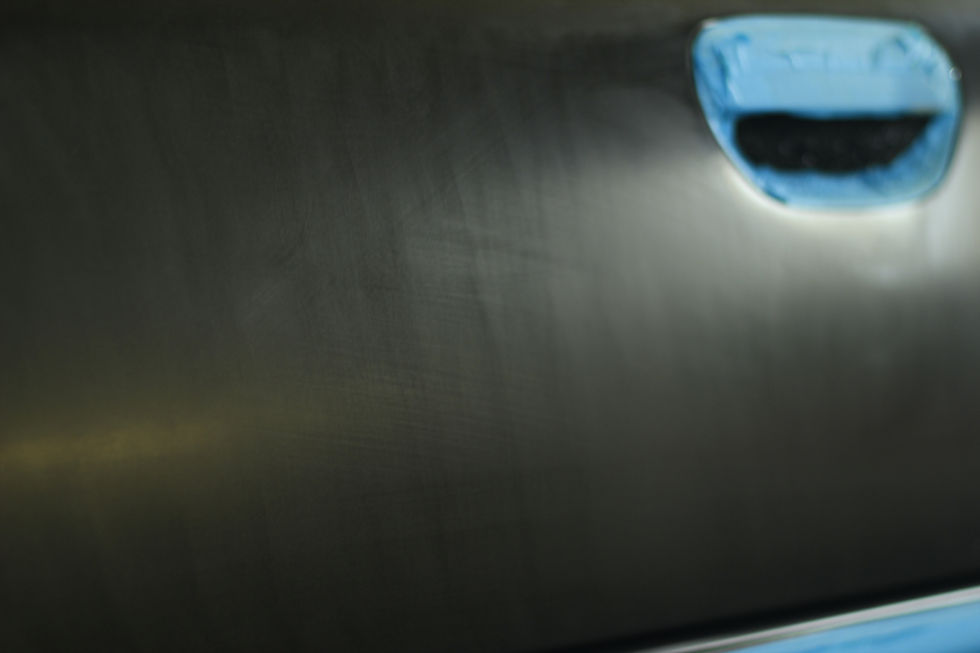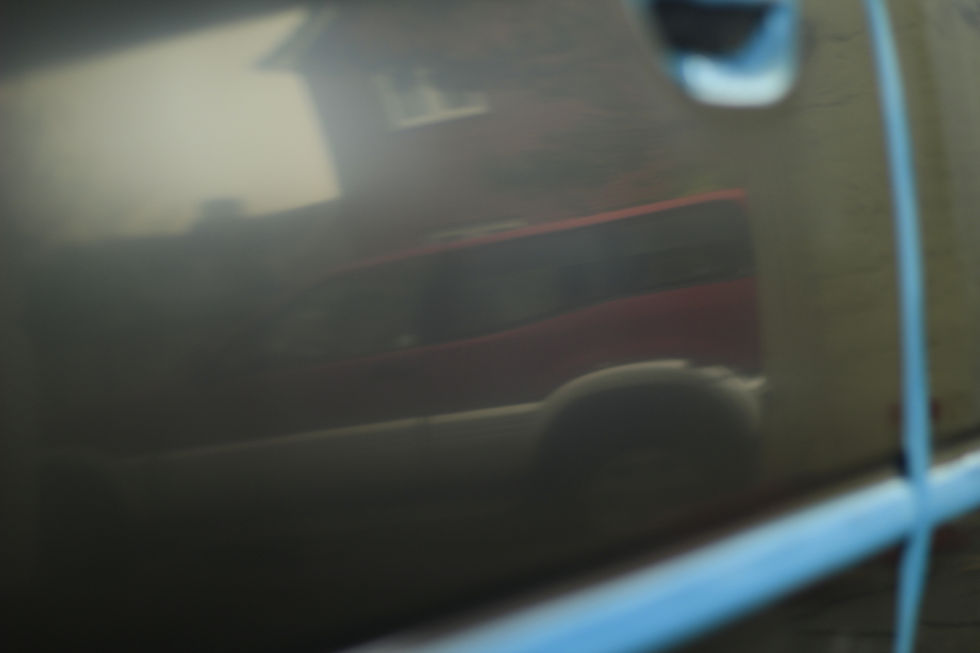Audi A3 - Full Body Sand
- Aaron Brooks
- Nov 22, 2015
- 4 min read
This Audi S3 has previously received a paint job prior to the new owners purchase. Sadly, whilst a re-spray is meant to make a vehicle look refreshed and brand new again, this one had almost ruined the appearance of the entire car due to it being poorly finished... or not finished as it seems...



Firstly removing the licence plates the vehicle, the wheels were misted with a fallout remover and left to soak into the brake dust for a few minutes. An assortment of wheel brushes and wheel woollies allowed access to all areas of the wheel including spoke backs and barrels. The arches were sprayed with an APC and a long reach brush helped to free the accumulated dirt. A pressure rinse of both the wheel and arch removed any final grime.
Heavier soiled panels were sprayed with a citrus pre-cleaner to breakdown the dirt on the surface of the paint with a little extra bite than a regular pre-cleaner would. A foam pre-wash was then coated over the car and left to dwell for 3-5minutes. This gave enough time to agitate intricate areas like window rubbers and badges with a boar hair detailing brush. Door shuts were cleaned with APC and a boar hair brush also.
After thoroughly rinsing away the pre-wash, the car was moved onto the bucket wash. A two bucket method accompanied a high quality synthetic wash mitt and a pH neutral shampoo solution to cleanse the body free of surface dirt. Once washed down, another rinse down and the car was then partially dried off and moved out of the heavy wind for the next few steps.
Tar spotting was removed from the vehicle by misting a microfiber with Tar&Glue Remover and carefully massaging the spots away. As we thought about using a fallout remover, instead we turned entirely to claying the surface of the paint to remove surface contaminants. Once clayed, the car was then re-foamed and rinsed a final time before it was moved indoors. The car was then dried down with a drying towel.

All delicate trims like window rubbers were masked off to prevent any damage. Bonnet, door and other panel edges were then masked off too for extra care considering the work going to be carried out on this one.
The paint was then inspected for any damage that would need to be avoided when sanding the paint. Raised dents, protruding edges and glass were masked off to be extra careful on these sensitive areas. Any damage found was marked with a piece of tape for future reference. The paint readings were then taken and noted down in order to compare between the stages, an Audi A3 vector was used to jot the readings on.





The car was then sanded by a combination of hand & DA sanding techniques and various grits of papers and abralon disks. The sanding took place through 3 stages starting with the harsher grit of the 3. Each stage was then moved up a grade getting finer each time. This removed the imparted scratches that the previous papers caused whilst flatting the car. Edges were kept away from as much as possible without leaving obvious areas. The paint readings were then re-measured after each grade paper was used to see how much paint was removed by each step.
Once the sanding was completed to how we felt was a comfortable amount of paint to remove. An important thing to remember on a job like this is that even though the perfect finish may be achievable, it might not be safe to do so. Removing excess paint on this initial job may cause problems if the car needed to be re-polished sometime in the future.






The car was then re-polished back to a high gloss with a cutting polish and a wool polishing pad, removing the sanding marks from the final sanding stage of 3000. Two sets of 5-6 passes were required to remove the sanding marks. Once this first initial cut removed the sanding marks, the car was then re-polished with a lighter polish and pad combination. One that could cut marring out effectively from the wool pad but still finish down to a high gloss. As we weren't going for a show-winning finish, the third and final stage wasn’t necessary for this one. The car was then unmasked and wiped of any polish remains and brought outdoors. The car was foamed again to lift any polish residue, dust and polish splatter before pressure rinsing the remains away. To ensure all polish reside was removed, the car was re-washed with the two bucket method to ensure all residues and tape lines were removed. A rinse and the car was brought back indoors and dried entirely by warm-filtered air to eliminate the chances of re-marring the paint during the drying process. Once dry, the car was hand polish to remove any minor wash marring that may have occurred on the wash-down. It also leaves a perfect base to add the wax onto. The car was polished with Auto Finesse Tripple and then buffed gently to a high gloss. The car was then waxed using Auto Finesse Spirit for its pearlescent properties. The panels were waxed one by one. Applying the wax with a foam applicator, leaving between 1-3minutes to cure and then buffing off the residue to reveal a lustrous deep shine. The second coat was then applied a minimum of one hour from the removal of the first layer. During the hour to pass the time on the wax layering, the plastic trims were dressed with Auto Finesse Revive and Dressle for the complex nose grills. Wheels were wiped free of dust and polish spatter with a quick detailer and the tires were then shines using Gtechniq T1 Tyre & Trim. Arches were dressed with Dressle too at this point. All glass was cleared free of water spots and product remains both inside and outside. The door shuts were wiped over with a quick detailer for dust and polish. The exhaust tips were given a quick rub over with a metal polish to finalise what has been one of the most daunting tasks carried out by myself at Scene Clean Valeting. The Results...














Comments